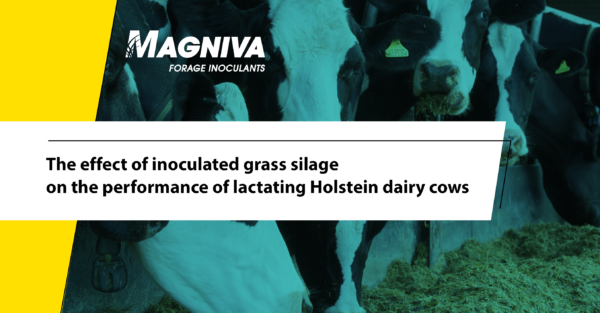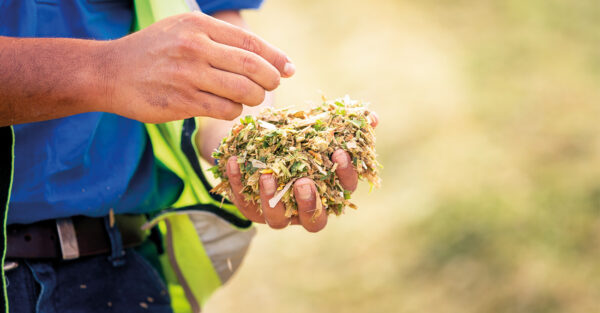Blog | Reading Time 3 minutes
Three options for the best feed value from your cereal crop: silage, crimp or combine?
So you’ve got your crop growing – now is the time to weigh up your options.
Lientjie Colahan, technical sales support at Lallemand Animal Nutrition, outlines what to consider as cereals start to mature and where inoculants can help safeguard nutritional value.
Option 1: Make wholecrop silage?
Making wholecrop silage could help reduce the amount of feed you need to purchase this winter. It:
– offers a supplementary forage if you’re having a disappointing grass silage year
– gives you another source of fibre as the straw content provides ‘scratch factor’ to balance less fibrous, highly digestible grass silage
– provides a high value silage, supplying starch as well as fibre into the rumen.
– Can balance other highly acidic forages
Things to consider:
– Will I have enough forage from my grass and/or maize or do I need to bank another source in the form of wholecrop?
– Treat your cereal crop as if it were going to be combined, and wait until first and second-cut grass silage has been analysed before deciding when to harvest it. If you need more forage and/or fibre, wholecrop silage is a good option.
Option 2: Crimped grain?
Crimping your grain:
– provides a rumen-friendly source of starch which is cheaper than bought-in concentrate
– means you still have straw available for feeding or bedding – it just needs to be left out to dry for a minimum of 48 hours
Do I want to reduce the amount of bought-in feed concentrate?
– Would I get more from my crop if I crimp it to make a starch source rather than ensile it as wholecrop for a fibre source?
– Do I have the correct handling and storage facilities to produce and store crimped cereals? Crimp is a very high value feed source and is prone to spoilage during feeding if not properly treated, so small concrete clamps work best.
– Is there a crimping contractor available in my area?
– You will need to make adjustments to your regular combining process, only taking ¾ the width of the header, opening the sieves as wide as possible, only filling the grain tank ½ to ¾ and not leaving any grain in the combine overnight.
Crops suitable for crimping include maize, barley, wheat, oats and triticale. The grains should be harvested at a moisture content of 25-40% – typically two or three weeks earlier than conventionally combined cereals. Due to this high moisture content, all crimped cereals need to be treated with an appropriate inoculant to reduce spoilage and nutrient loss.
Option 3: Combining grain?
Allowing your crop to mature and dry fully means you still have dry grain and dry straw to either use or sell.
Things to consider:
The value to you of the grain sold as a commodity versus the cost of bought-in feed and likely market value of animals if the grain is used as feed. You may also have cash flow to consider, and need straw for bedding.
Using innoculants:
Making wholecrop silage or crimping grains can be tricky. Using a specifically tailored inoculant helps you control the process:
Lallemand’s Magniva inoculants include:
– Magniva Platinum Wholecrop: rapidly acidifies the forage and stabilises it during feed-out with its unique combination of homo- and heterofermentative bacteria and enzymes.
–Magniva Platinum Crimp: drives the acidification and reduces the yeasts and moulds that cause spoilage at feeding through the combination of starter strain acidifying bacteria and stability enhancing bacteria.
For more help and advice on making wholecrop silage or crimped grains, our practical guides are here or find your local Lallemand contact here
Published Jun 27, 2023
Related articles
Need specific information?
Talk to an expert



